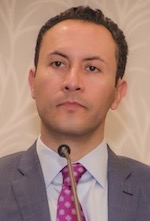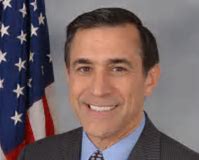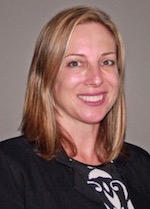Daily Business Report-Jan. 10, 2018
The California state Capitol in Sacramento (thinkstock)
California is Sitting on a Surplus,
but Don’t Expect a Refund
By Judy Lin | CALmatter
It should be said that California’s resistance began before there was a resistance.
When Gov. Jerry Brown unveils his last budget today, it will bookend eight years of a progressive march to reduce greenhouse gases, expand health care, grant more rights to undocumented immigrants and raise the minimum wage to $15 an hour. Along the way, blue state voters have assented by passing temporary taxes on the rich—not once, but twice. The top marginal income tax rate is now 13.3 percent, the highest state income tax rate in the country.
In short, policies that are now labeled acts of resistance to President Donald Trump were alive and ascendant in California long before he won the White House. But the contrasts have become much more stark. Instead of cutting taxes, the Democratic governor and his party’s legislative leaders have passed a gas tax to help pay for aging infrastructure. Instead of trying to shift government out of the healthcare marketplace, California is looking for a way to fund single-payer health care, including coverage for undocumented immigrants. Instead of criminalizing pot, the state is looking forward to collecting taxes on marijuana sales.
In the months between now and the June deadline for a final budget, the governor and the Legislature will hammer out details. The focus this year: what to do with an expected surplus of $7.5 billion. Republicans say return it to California’s 40 million residents as a nice tax refund. The governor’s approach is typically save some and spend some. Democratic legislators mostly want to spend it.
“We have a very different approach,” said Assemblyman Phil Ting, the San Francisco Democrat who chairs the Assembly Budget Committee. “Our focus, the people who we think need tax relief, are the working Californians who are making less than $25,000. That’s where we want to spend our money, making sure they have money to pay rent, to pay for food.”
Rather than giving out “huge corporate tax breaks and a huge tax break for the wealthiest in this country,” Ting has a long list of how he would like to spend that extra $7.5 billion, including:
- Increase the state’s Earned Income Tax Credit, which puts money into the hands of the working poor
- Expand Medi-Cal health care for poorer Californians to cover all remaining uninsured residents, mostly undocumented immigrants
- Expand early education for 4-year-olds through preschool and transitional kindergarten programs
- Increase college aid
- Expand mental and social services to reduce the number of criminals who go on to re-offend
As supportive as Brown might be of these Democratic aspirations, his administration is urging legislative leaders to proceed with caution. Besides the state’s tax structure, which is more vulnerable than ever to the stock market gains and losses of its wealthiest citizens, his office warns Washington is now California’s biggest threat.
“More so than last year (when Republicans were pushing to repeal the Affordable Care Act), there’s even greater federal uncertainty that could affect what’s going on with our budget,” said Brown’s finance spokesman H.D. Palmer.
Since Brown was elected to a second stint as governor in November 2010, the state has climbed out of the recession and enjoyed economic prosperity. The unemployment rate, which topped 12 percent, now stands at 4.6 percent. Since his return, California has added 2.4 million jobs and hourly wages are up $4.76 an hour. The state, which carried a $25 billion deficit in his first year back, has enjoyed billion-dollar surpluses in recent years and the state now has a rainy day fund.
California’s current $183 billion budget is dominated by education (30 percent) and health care (33 percent) spending. Health care spending has been growing particularly fast since the state embraced the Affordable Care Act, best known as Obamacare.
The act not only grew the marketplace for private health plans but allowed states to expand their Medicaid health insurance programs for the poor. Because California is among 30 states that expanded Medicaid, the federal government is paying at least 90 percent of the cost for newly eligible enrollees.
That has allowed California to draw billions in extra funding from the federal government to bolster Medi-Cal, the state’s version of the national Medicaid program. As a result, the number of people without health coverage in the state has dropped to a historic low: from 17.6 percent in the 1980s to 7.6 percent in 2016. Today, one in three Californians are covered by Medi-Cal.
Public schools too have greatly benefited since the recession, with much of the extra spending on schools going to improve teachers’ salaries.
However, if the federal government doesn’t reauthorize the Children’s Health Insurance Program for 1.3 million children, that could add more than $850 million in costs to the state over two years.
Worse, if Republicans in Washington slash Medicaid funding in 2018, the state could lose between $25 billion and $50 billion, said Chris Hoene, executive director of the California Budget & Policy Center, a progressive think tank in Sacramento.
“The reality is California could not afford the scale of the cuts the GOP has been proposing,” Hoene said. “That’s going to put state leaders in a position of deciding who gets state services and how do they fund that.”
_ __________________
San Diego Office Market Soars in 2017
San Diego’s office market flourished in the second half of 2017, according to Cushman & Wakefield’s latest year-end market report. With a commanding 716,600 square feet of positive net absorption in the third quarter, San Diego’s office sector added another 356,000 square feet of net gains in the fourth quarter, which pushed this market to well over 1 million square foot of occupancy growth in the past six months.
“San Diego recorded an astounding 1.6 million square feet of office net absorption overall in 2017, observing its highest annual figure since 2005’s 1.9 msf,” said Jolanta Campion, Cushman & Wakefield’s research director in San Diego. “The fourth quarter represented the 14th consecutive quarter of positive net absorption in the region’s office market.”
_ __________________
Ballot Initiative for Convention Center
Expansion, Homelessness Launched
A long-stalled effort to expand San Diego’s convention center was revived Monday with the announcement of an initiative to raise the city’s hotel room tax. The measure, targeted for the November ballot, would raise $6.4 billion over 42 years, with the revenues raised divvied up among the expansion project, homelessness initiatives and road repairs. The bulk of the revenues would go for an expansion project, but $2 billion would be set aside for homeless services and permanent housing.
_ _________________
Home Sales Are Lackluster
in December, and Down for the Year
A dramatic reduction in inventory contributed to slow December sales of existing homes, and lower overall sales for the year 2017, according to housing statistics compiled from the Multiple Listing Service by the Greater San Diego Association of Realtors.
Single-family home sales last month were down by 8 percent compared to November, and by nearly 15 percent from December 2016. Condominium and townhome sales in December were down 9 percent from the previous month, and 12 percent from a year ago. Sales of all existing homes were off by 3 percent in 2017 compared to 2016.
Median home prices continue to best their pre-recession levels. Single-family home prices dipped slightly in the past month, but exceeded $600,000 cumulatively for the twelve months, more than 7 percent higher than the previous year. Attached properties (condos and townhomes) finished the year 8 percent higher than 2016, and stood at more than $400,000. Resale properties are closing escrow in an average of 30 days.
“The number of homes for sale, the average days on the market, and housing affordability are challenging for prospective buyers in this San Diego market,” said SDAR President Steve Fraioli. “The only thing that’s certain in this 2018 housing climate is that sellers have the upper hand and should achieve their asking price… or better.”
In December, the ZIP codes in San Diego County with the most single-family home sales were:
92026 (Fallbrook) with 44
92027 (Escondido East) with
92057 (Oceanside North) with 40
92071 (Santee) with 40
92078 (San Marcos South) with 39
The most expensive single-family property sold in San Diego County in December was a single-level home in Rancho Santa Fe, built in 2017, with 8,250 square feet, 7 bedrooms, and 7 baths. The sale price was $10.85 million.
Click here for a detailed look at the numbers.
_ __________________
Salk researchers Nearing Clinical
Trials to Treat Alzheimer’s Disease
The experimental drug J147 is something of a modern elixir of life; it’s been shown to treat Alzheimer’s disease and reverse aging in mice and is almost ready for clinical trials in humans. Now, Salk scientists have solved the puzzle of what, exactly, J147 does. In a paper published today in the journal Aging Cell, they report that the drug binds to a protein found in mitochondria, the energy-generating powerhouses of cells. In turn, they showed, it makes aging cells, mice and flies appear more youthful.
“This really glues together everything we know about J147 in terms of the link between aging and Alzheimer’s,” says Dave Schubert, head of Salk’s Cellular Neurobiology Laboratory and the senior author on the new paper. “Finding the target of J147 was also absolutely critical in terms of moving forward with clinical trials.”
_ __________________
New Regenerative Drug for
Osteoarthritis Entering Clinical Trials
The California Institute for Biomedical Research,the nonprofit drug discovery affiliate of The Scripps Research Institute, announced that it will begin treating osteoarthritis patients in March with an investigational drug developed as a collaboration between the two institutes. Known as KA34, the drug is a small molecule that “encourages adult stem cells already residing in the joint to mature toward chondrocytes, the cells that produce and maintain healthy cartilage,” explains Peter Schultz, president of TSRI and Calibr. “Current medicines only treat the symptoms of OA,” he adds, “while KA34 was created to address its underlying causes through the regeneration of cartilage. We’re very enthusiastic about its potential to restore mobility and quality of life to individuals with OA.”
_ __________________
Kristan Gaspar Voted Chair
of County Board of Supervisors

Supervisor Kristin Gaspar was unanimously voted chairwoman of the San Diego County Board of Supervisors for 2018 on Tuesday. The board also named Supervisor Dianne Jacob to serve as vice chairwoman and Supervisor Greg Cox as chairman pro tem. Gaspar accepted the gavel from Jacob.
As new chairwoman, Gaspar will outline the county’s 2018 goals at the annual State of the County address on Feb. 27 at the Scripps Seaside Forum in La Jolla.
_ __________________
Port of San Diego Swears in 2018 Board

The Port of San Diego swore in its 2018 Board of Port Commissioners Executive Officers on Tuesday during ceremonies held at the Port Pavilion on Broadway Pier and at the Port Administration Building.
Rafael Castellanos, one of three city of San Diego commissioners, was sworn in as chairman.
Garry J. Bonelli, who represents the city of Coronado, was sworn in as vice chair. Ann Moore, who represents the city of Chula Vista, was sworn in as secretary.
_ __________________
Reba Lemmons Elected President
of ASID San Diego Chapter

Reba Lemmons, owner of The Art of Design of Fallbrook, has been elected president of the San Diego chapter of the American Society of Interior Designers (ASID) for a one-year term. Lemmons specializes in residential interior design throughout San Diego County. She has been involved with ASID since 2001, holding many leadership roles, including president-elect and director of professional development.
The current ASID San Diego Board of Directors also includes Lindsay Hester, president-elect; Ann Cummings, director of financial oversight; Tamalyn K. Shea, director of communications; Brooke Williams, director of professional development; Beppie Mostert, director of membership; Natasha Estes, director at large; and Arnaz Khambatta, student representative to the board.
_ __________________
2018 Employment Law Update Jan. 17
As California employers prepare for the new year, part of their planning will include gearing up for new employment laws, most of which went into effect Jan. 1, 2018. Employers can expect a wide array of changes that will warrant reviews or revisions to their existing employment forms and policies.
To help navigate these changes, Dinsmore & Shohl LLP will host a complimentary 2018 Employment Law Update Jan. 17, hosted by Partner Adriana Cara, from 7:30 to 9 a.m. The update will provide essential information to employers that will help them to avoid potential problems. The law firm is located at 655 West Broadway, Suite 800 in Downtown San Diego.
_ __________________
PSAR Presents Legal Update from
California Association of Realtors
The Pacific Southwest Association of Realtors (PSAR) will host its “2018 Legal Update” with Gov Hutchinson, assistant general counsel with the California Association of Realtors (CAR) from 11:30 a.m. to 1:30 p.m., Friday, Jan. 26, at PSAR’s East County Service Center, 1150 Broadway, El Cajon. Hutchinson, who manages CAR’s Member Legal Services Program and advises Realtors through CAR’s Legal Hotline, will share the latest information on real estate-related legal cases and new laws, as well as rule changes on disclosure and other CAR transaction forms. Hutchinson has worked at CAR since 1985.
Cost to attend is $10 for PSAR members, $20 for nonmembers. To RSVP, call (619) 579-0333 or visit www.psar.org/gov.
_ __________________
Democrats Tap San Diego’s
Toni Atkins as Senate Leader
Toni G. Atkins of San Diego was selected Tuesday by her follow Democrats to lead the state Senate as president pro tempore. The Democratic Caucus voted unanimously to name Atkins the top leader of the Legislature’s upper house. The body is scheduled to formally elect Atkins on March 21, at which point she will take over from the Senate’s current leader, Sen. Kevin de Leon, D-Los Angeles, according to his office.
_ __________________
Republican Congressman Darrell Issa
Announces he Won’t Seek Re-Election

Congressman Darrell Issa (R-Vista), announced today that he would not seek re-election to the 49th Congressional District seat that he has held for the past 18 years.
“While my service to California’s 49th District will be coming to an end, I will continue advocating on behalf of the causes that are most important to me, advancing public policy where I believe I can make a true and lasting difference, and continuing the fight to make our incredible nation an even better place to call home,” Issa said in a prepared statement
_ __________________
Personnel Announcements
Jennifer Davies Joins San Diego Tourism Authority

The San Diego Tourism Authority announced that Jennifer Davies has been named director of cultural tourism, Balboa Park. A recognized local leader in public affairs and communications, Davies is the first person to occupy the newly created position.
In her new role, Davies will oversee the SDTA’s Balboa Park-focused cultural tourism initiatives, working to promote Balboa Park as a nationally recognized cultural icon and generate travel to the San Diego region.
“Balboa Park is one of San Diego’s greatest assets, but awareness of the park’s incredible offerings is still relatively low among visitors,” said SDTA President and CEO Joe Terzi. “Jennifer brings with her great marketing acumen and a passion for Balboa Park, as well as San Diego’s greater arts and culture community, and we are excited to have her join the SDTA’s team to raise the park’s profile both nationally and internationally.”
Davies has a record of leading communications, marketing strategy and program development for prominent San Diego organizations. Prior to joining the SDTA, Davies served as the assistant dean of external affairs for UC San Diego Extension and vice president of external affairs for the Downtown San Diego Partnership. She also served as director of communications for former City Council President Sherri Lightner and worked as the marketing and communications manager for the Centre City Development Corporation.



